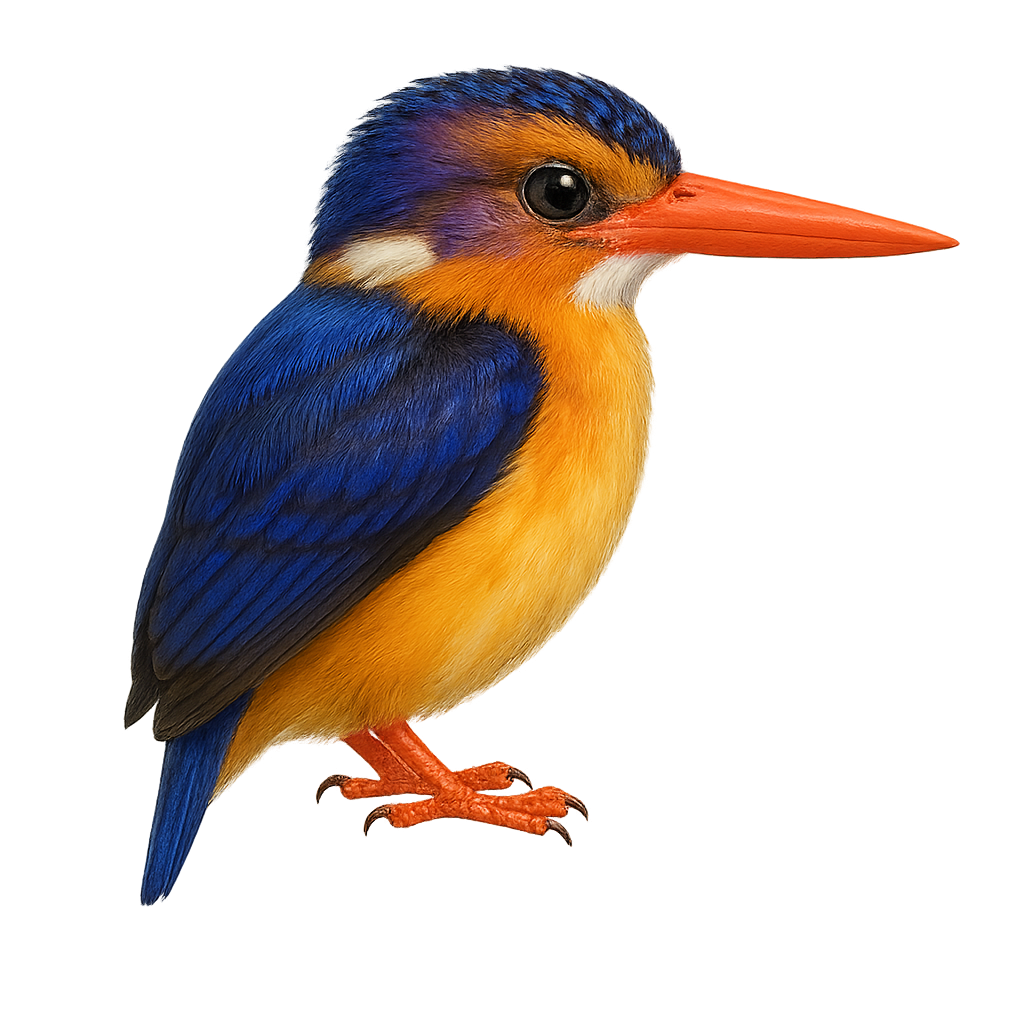Your wildlife photography guide.
Explore the african pygmy kingfisher in detail, study its behavior, prepare your shots.
Where to observe and photograph the african pygmy kingfisher in the wild
Learn where and when to spot the african pygmy kingfisher in the wild, how to identify the species based on distinctive features, and what natural environments it inhabits. The WildlifePhotographer app offers tailored photography tips that reflect the african pygmy kingfisher’s behavior, helping you capture better wildlife images. Explore the full species profile for key information including description, habitat, active periods, and approach techniques.
African Pygmy Kingfisher
Scientific name: Ispidina picta

IUCN Status: Least Concern
Family: ALCEDINIDAE
Group: Birds
Sensitivity to human approach: Suspicious
Minimum approach distance: 5 m
Courtship display: September to October
Incubation: 20-22 jours
Hatchings: September to November
Habitat:
Humid forests, wooded areas, riverbanks
Activity period :
Primarily active during the day, with peak activity in the morning and late afternoon.
Identification and description:
The African Pygmy Kingfisher is a small bird, measuring about 12 cm in length. It is easily recognizable by its colorful plumage, with bright blue shades on its back and wings, and an orange hue on its belly and chest. Its beak is relatively long and pointed, adapted for catching small aquatic prey. This kingfisher primarily inhabits humid forests and wooded areas near water, where it feeds on small fish, insects, and crustaceans. Although often solitary, it can sometimes be seen in pairs, especially during the breeding season. Its discreet presence and rapid flight make it difficult to spot, but its high-pitched, piercing call can reveal its presence.
Recommended lens:
400mm – adjust based on distance, desired framing (portrait or habitat), and approach conditions.
Photography tips:
To photograph the African Pygmy Kingfisher, it is advisable to use a telephoto lens of at least 400mm to capture detailed images without disturbing the bird. Look for areas near water where it is likely to hunt. Be patient and discreet, as this bird is suspicious and may fly away quickly if disturbed. Use a tripod to stabilize your camera and wait for the right moment to capture its rapid flight or when it perches. Morning or afternoon light can provide ideal conditions to highlight its bright colors.
The WildlifePhotographer App is coming soon!
Be the first to explore the best nature spots, track rutting seasons, log your observations, and observe more wildlife.
Already 1 430 wildlife lovers subscribed worldwide

